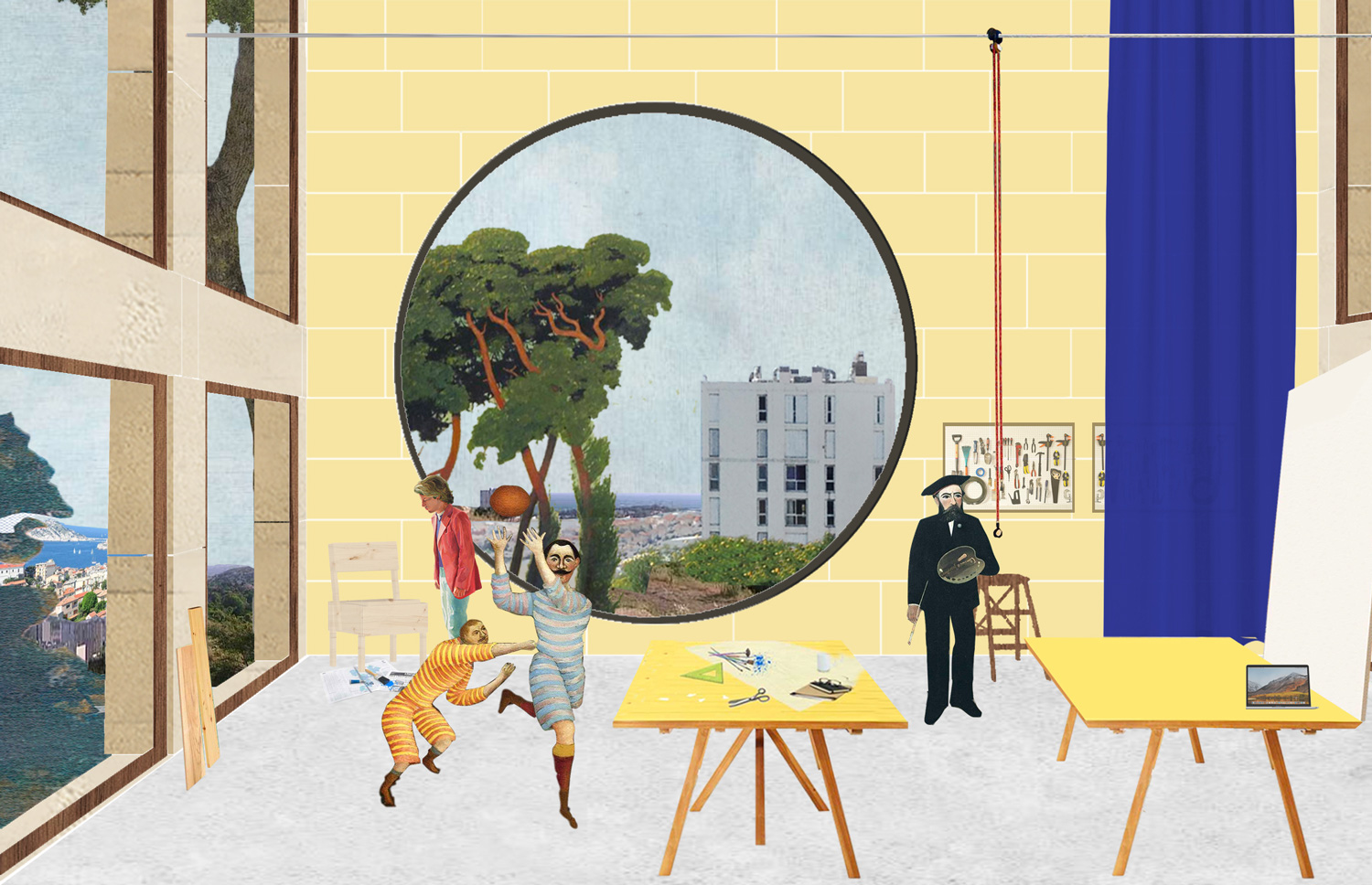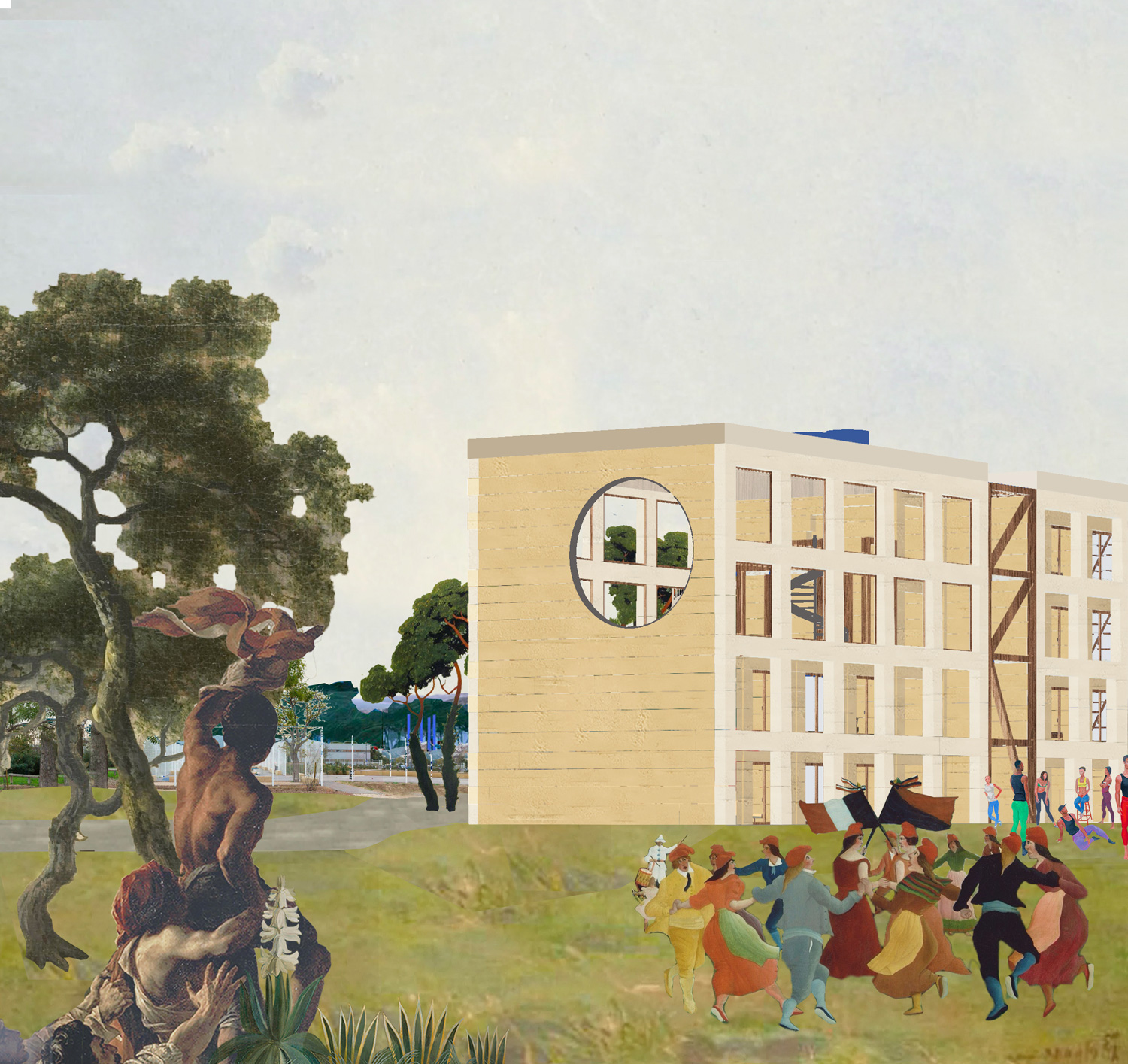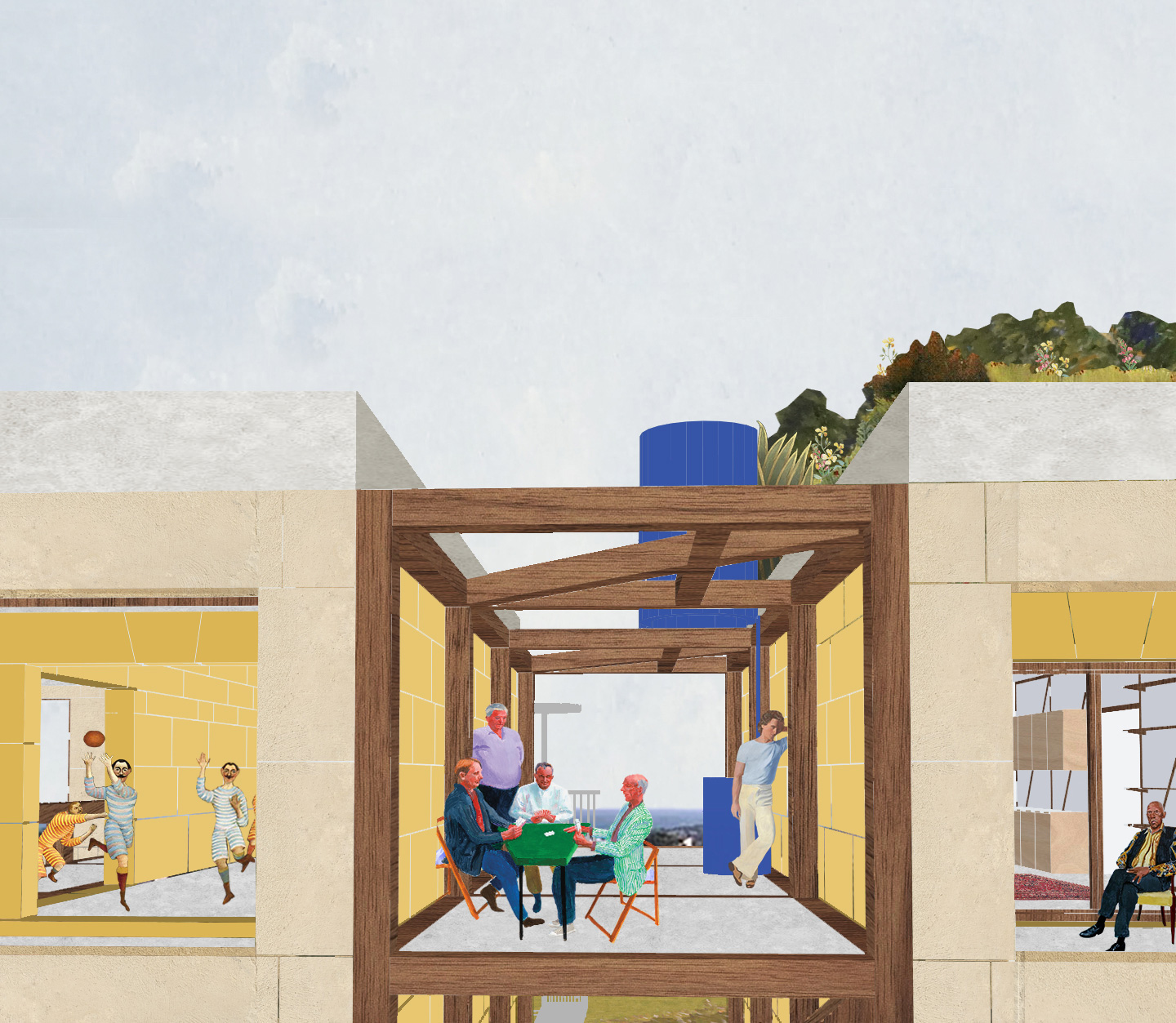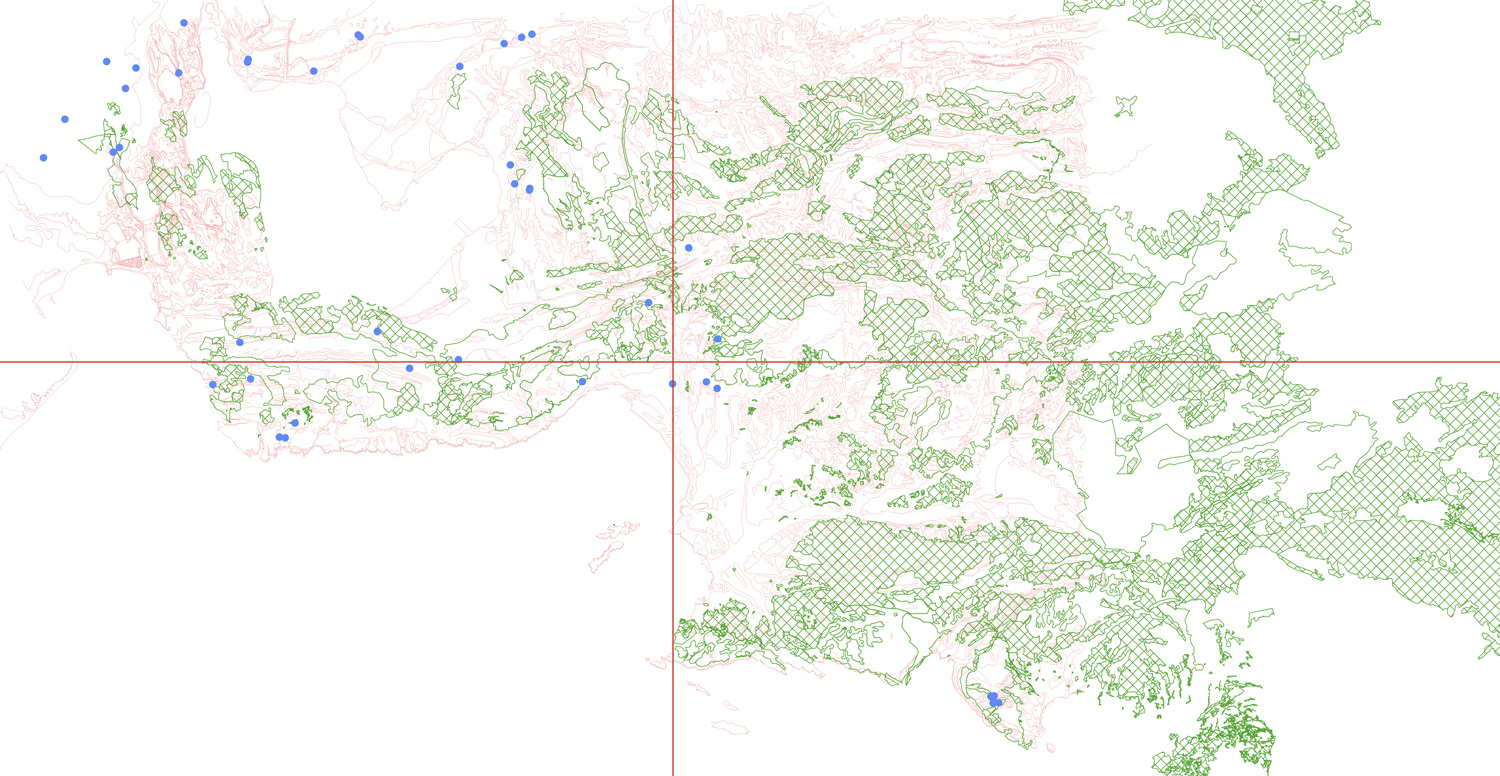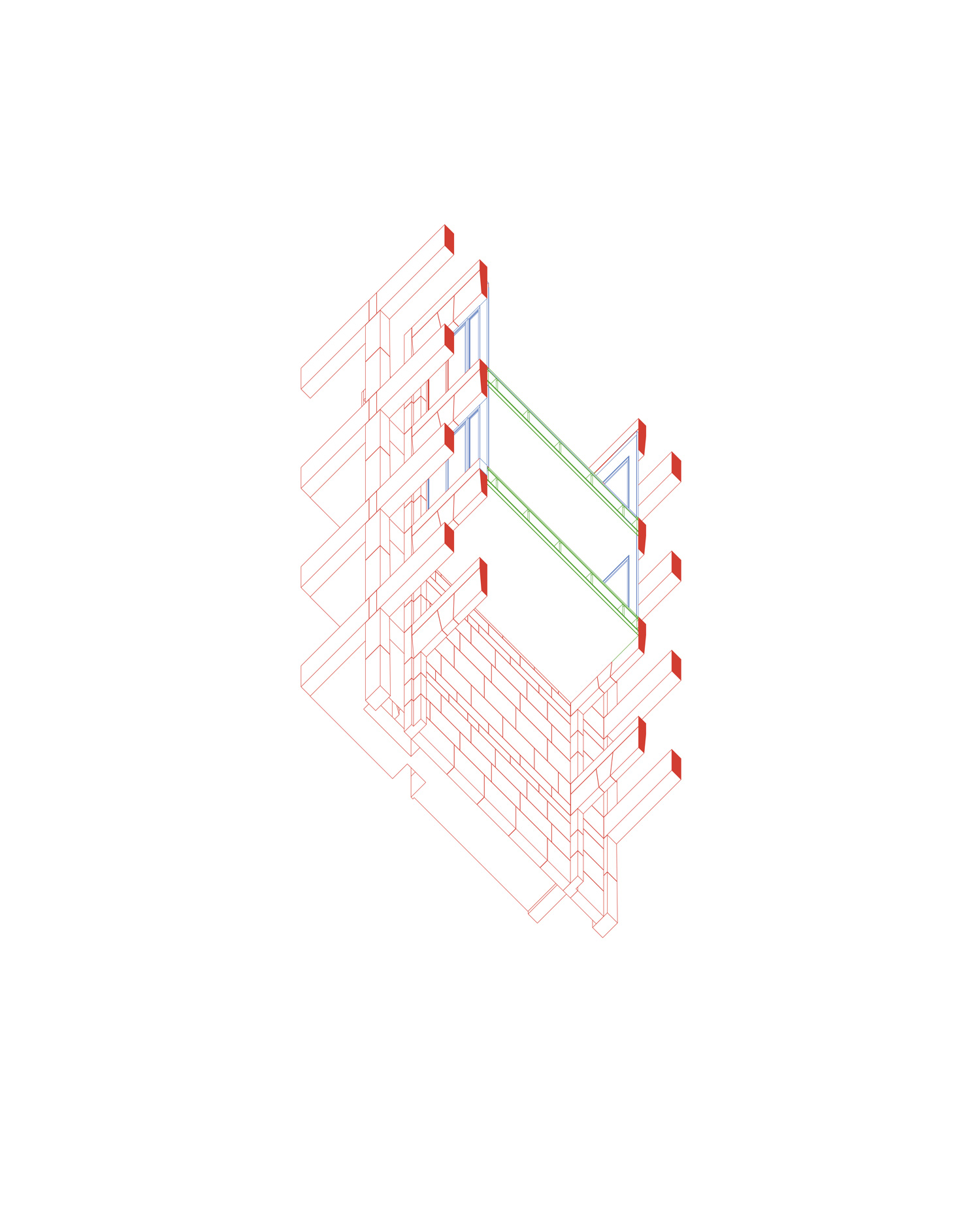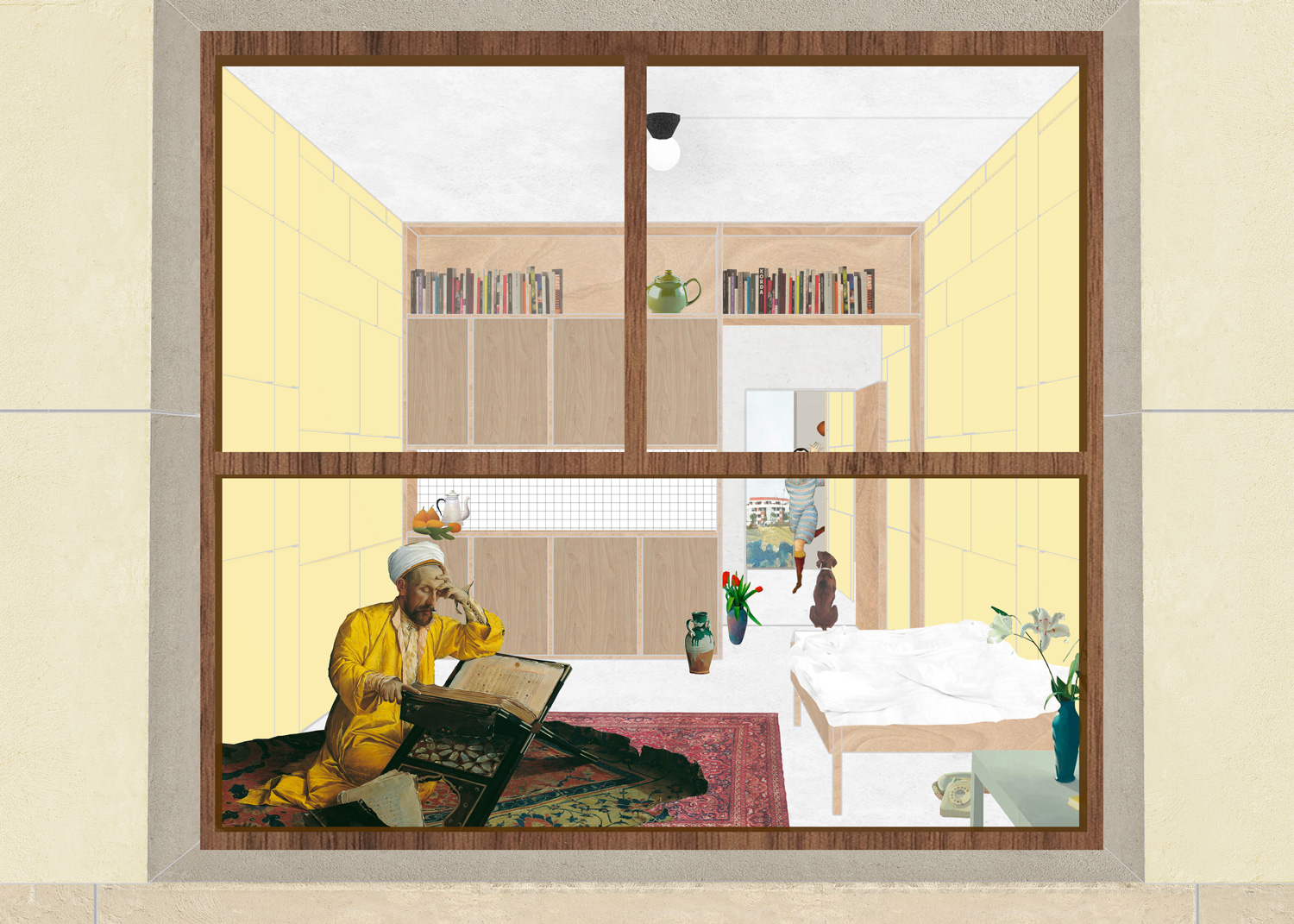☉ Plein Sud is an academic project by Mensah Allan for Paris School of Architecture and Ensa PVS in 2021. It is located in Marsella France in a park setting. Its scale is medium with a surface of 4.000 sqm. Key materials are stone and wood.
«Plein sud» is a project of 28 housing units and a workshop in the north of Marseille.
Located on the Plan d’Aou, these collective stone dwellings are at the heart of Marseille’s urban problematics.
Between the large urban expanses inherited from the ‘bars’ of the 70’s and the village fabric of the Plan d’Aou, a sort of ‘micro-city’ in the city, we proposed here, as a bar, as an assumed reinterpretation of this typology that has so stigmatized the city.
The project translates the domestic scales of the Plan d’Aou by a gesture, a line of stone standing alone and dignified facing the Mediterranean sea.
The housing bar rewrites the urban forms of the Bricarde to the west but is a building on the scale of the Plan d’Aou : it remains in 4 storeys building, not exceeding the quasi-urban typologies of the 2010s to the east of the site.
Its length can be read in two bodies of buildings, the first smaller one, concentrating student housing, justified by the nearby medical campus and the workshop open to all inhabitants of the area, the other longer one, concentrating the rest of collective housing.
This nuance in the over-demonstrative radicality of the elevation is supported, signaled, by a ‘fault’, a large wooden structure common to both bodies of the building that carries common spaces and agglomerates architectural devices: public spiral staircases for direct access to the workshop, rainwater recovery tanks and purification systems on the roof.
The large, overly authoritative sill is then cut away to reveal a building made of collages, a bricolage of naively added formal artifacts.
These two lengths are striated by the same frame in cut stone, the dwellings, enclosed between two loggias of soft stone are then through and ventilated, the main rooms open towards the south and take advantage of the presence of a stone wall, it brings the inertia known to the stone, ensures the protection.
The rooms are through and ventilated, a frame of living room is attached to a night area by the interface of a wooden structure between two stone walls. The entrances are made by the south and the main spaces look south. In this reading, from across, we cut out bedrooms and dining rooms that finally read more like ‘rooms’ to be appropriated.
The demand for T3 by investors (an apartment for a couple with children) inherited from a real estate heritage dating back to the thirty glorious years, is finally becoming relevant despite the tensions on the other types of housing in Marseille.
For the same size, the same price then, a multitude of possibilities of evolution in time are offered: Finally, a good housing is a housing that offers freedom.
The constructive system of the stone is then an opportunity in front of the contemporary stakes : the room becomes office, the office becomes roommate dorm, the dorm becomes playroom, etc, etc.
The project is placed in a constructive tradition that is inherited from architectures such as those of Fernand Pouillon in the Old Port of Marseille, or in Alger, or Utzon work in Majorca.
The detail remains rudimentary, the almost archaic stacking of stone blocks testify to a strong constructive heritage in the south of France. The massive stone facades are coupled with glued laminated wood and plaster in order to guarantee spans and situations specific to today’s housing. Hybridizing stone with other materials and contemporary techniques allows to evoke without copying, the offered housing is contemporary and admits the comfort sought today while preserving the incomparable aspect of the natural material.
Nevertheless, the facade-to-facade span between the stone walls allows for flexibility, a fully malleable wooden structure wall can be opened, removed, moved. We imagine this wall as the support of the home, it holds all the necessary devices for housing, kitchens, storage, all being totally appropriable. Elsewhere the housing is not very talkative and favors a neutral plaster.
This structure of wooden partition between the walls thus becomes the theater of the flexibility of housing. The housing is then a white page that each tenant writes tenant writes on a daily basis. Once gone, it is recovered, repaired and sanded in the workshop to be re-rented.
We propose 28 dwellings ranging from studios to T5, developed between two loggias in massive stone.
The section is then a set of facades that follow one another: towards the outside, a white Estaillades stone, whose stacks can be read rising from large openings on the landscape, behind: a façade of yellow Fontvieille stone, more massive, bringing a more domestic lecture reinforced by flat arches in the openings of the dwellings.
The Estaillades stone pillars are not totally aligned, they become thinner and more offset as the floors rise.
These games authorized by structural pragmatism then become a ‘play’ in the project, the reading of the facade changes and pare the inherent austerity of the long building the columns ‘dance’, reminiscent of the great walls of the white stone quarries of southern France.
The openings and the views from the loggia are thus varied, each dwelling is then enriched by this ambiguity.
